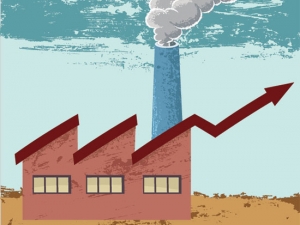 |
| Reviews and Templates for Expression We |
Can carbon emissions become a revenue stream?

On the heels of last week's EPA’s new carbon rules proposed by President Obama, it's time to take a closer look at a potential disruptive technological breakthrough: Taking CO2 waste streams and turning them into saleable, value-added feedstocks.
Certainly, the deployment of renewables, energy efficiency, smart grid, and energy storage technologies offer some of the most cost-effective options for dramatically reducing emissions. But if you believe that fossil fuel power plants (along with other large-source emitters such as steel and cement producers) will remain a part of our industrial ecosystem for some time to come, then capturing and using CO2 from these emitters is an important and critical piece of the carbon-management equation.
Large industrial, utility and fossil fuel players have traditionally promoted the concept of carbon capture and sequestration (CCS) — taking CO2 emissions and piping them into underground wells. But many have questioned the viability of such storage, with high costs, unintentional CO2 leakage and underground water contamination among the many concerns.
But what if we could take CO2 emissions from factories, refineries and power plants and turn them into value-added byproducts that generate cash? What if we could mimic nature’s process of reusing waste streams, but with turnaround times in minutes instead of months, years, decades or centuries? One company, Austin, Texas-based startup Skyonic, claims it is just months away from cracking this code.
The company's initial effort, a $125 million commercial-scale facility at a San Antonio, Texas, cement factory, is scheduled to open later this year. Skyonic plans to capture CO2 from the cement plant’s exhaust stream, convert the gas into solids in a process called “mineralization” and process it into bicarbonate (baking soda) and hydrochloric acid. For its next act, the company is aiming to take carbon emissions and turn them into limestone (an approximately $400 billion annual global industry, according to the company), and use it for making everything from paper and glass to paint and cement.
What’s the payback time for such a plant? Skyonic CEO Joe Jones estimates that the company’s first facility will produce around $50 million per year in saleable product, split among acid and bicarbonate. The company is projecting an internal rate of return of 30 percent on its first plant and expects that future plants can be built with similar returns. Additionally, the San Antonio plant will reportedly strip more than 90 percent of the CO2 from the factory’s emissions, with future plants projected to perform similarly.
Jones believes a number of megatrends are lining up in favor of chemical use instead of pumping CO2 into the ground. The concept of mineralization is becoming more widely understood, the clean-tech investment world has gone from focusing largely on solar and wind equity investments to a much more diverse portfolio of project investments, and years of CCS research have not yielded a cost-effective solution. “Ten years ago everyone was talking about CCS, but folks realize now that the associated costs aren’t tenable,” Jones said. “Our investors include many multinationals who’ve spent billions of dollars pursuing ‘pump it in the ground.’” Those investors include such energy giants as BP, Cenovus, and ConocoPhillips, and Skyonic is also the recipient of a $25 million U.S. DOE grant to develop its first plant.
Another group working to spur the development of carbon capture and utilization (CCU) technologies comes from the heart of tar-sands country, the Alberta, Canada-based Climate Change and Emissions Management Corporation (CCEMC). This independent organization is supported by a regional carbon levy on excess emissions from large greenhouse gas emitters in Alberta (to the tune of around $60 million to $80 million annually at present rates).
In its effort to support innovation, in 2013 the CCEMC launched a $35 million international Grand Challenge, a multi-year contest that awards innovative carbon uses. In April it announced the winners of its first-round awards of $500,000, access to a support team to help winners develop their ideas, and the chance to move onto the second round where the prize money will increase to $3 million each. First-round recipients totaled two dozen organizations, including Skyonic, the University of Maryland and Solidia Technologies in the U.S.; Carbon Cycle United in the U.K.; and the University of British Columbia and Enerkem in Canada.
One thing that isn’t missing is an abundant supply of greenhouse gas emissions. But to be successful, these innovators will need to turn nascent technologies into mainstream, viable, scalable processes. And they’ll need regulators to finally put a limit on CO2 emissions — as the EPA is attempting to do — and a price on carbon.
Pipe dream or crackable code? We’ll find out soon.
|
|
|
|
Copyright 2011 Energy and Technical Services Ltd. All Rights Reserved. Energyts.com |